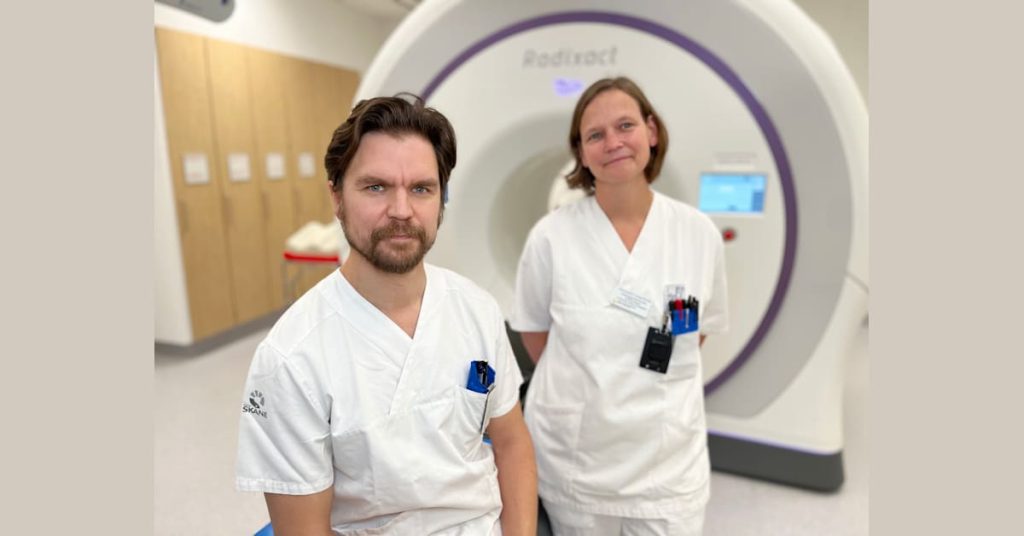Skåne University Hospital is the first in the Nordic region with a new technology in radiotherapy where the beam tracks the movement of the cancerous tumor during treatment. The technology currently used with patients with prostate cancer, however, means that radiotherapy can be done more precisely, making it safer for patients.
Since then, radiation technology has been used that monitors movements in the body and stops radiation if movement is outside the margins. The new technology means that the radiation field instead follows the motion of the object and does not need to be turned off. This technology, called Synchrony, was used for the first time during radiotherapy treatment at the Scania University Hospital in Lund in early October. So far, the introduction has gone as planned.
So far, we have used radiotherapy technology for one of our patients with prostate cancer. We are continually evaluating the technology and working to gradually use it in more patients where the tumor is in a complex site. The plan is also to use the technology in treating other forms of cancer in the future, says Per Munck Af Rosenschöld, a hospital physicist and area director of radiotherapy and radiation physics at Skåne University Hospital.
Tumors can move during radiation therapy
Every year, around 4,500 patients are treated with radiotherapy at Skåne University Hospital in Lund. Radiation therapy is usually divided into several occasions and patients who will be treated with radiation undergo CT or MRI scans for treatment planning.
On each occasion of radiotherapy, x-rays are taken to direct the beam to the correct area of the body. To compensate for the fact that the tumor can move during treatment, additional margins are added, which means that the radiation field is made larger.
X-ray images in real time
The new technology makes it possible to perform x-rays during radiotherapy, calculate the position of the tumor and adjust the radiation field to the new position without stopping the radiation. The patient’s breathing can also be tracked to get a real-time model of how the tumor is moving.
According to Petronella Lannerheim, an oncology nurse at Skåne University Hospital, this means that certain types of tumors that move during treatment can be irradiated with greater precision than before, thus avoiding surrounding tissues receiving unnecessary radiation during treatment.
– We’re not there yet, but the technology is being tested, but in the long term it means you can reduce the risk of problems that would otherwise occur after radiotherapy, such as bowel problems. In the long term, says Petronella Lannerheim, the technology can contribute to improving a patient’s quality of life.
A quantum leap in radiation technology
Because radiation has a higher resolution, this technique is mainly useful for tumors that move during treatment and where there is radiation-sensitive tissue in the vicinity of the tumor. Examples include certain types of prostate cancer, less common lung cancer, and episodic lung metastases.
– The technology involves a paradigm shift as we take a step from traditional radiation technology with fixed therapies to adaptive therapies that are shaped in real time according to the location of the tumor during continuous treatment. The region of Skåne has set aside research funds to drive the development of real-time radiotherapy and to validate the accuracy and potential of the technology, says André Änghede Haraldsson, a hospital physicist in the Radiotherapy Physics Unit.
For more information, please contact:
Per Munk af Rosensköld, hospital physicist and district director for radiotherapy and radiophysics, Tel. 040-33 12 17.

“Extreme tv maven. Beer fanatic. Friendly bacon fan. Communicator. Wannabe travel expert.”







More Stories
Why Rare Earth Metals for Electric Cars Are Crucial for Modern Mobility
“We want to promote critical rules approach”
“A lot happened during the trip,” Jönköping County Council